

This project was a strategic initiative to increase video engagement and revenue by integrating video into the image search experience across iStock and Getty Images. Through concept testing, navigation redesign, and scalable system thinking, we improved video discovery.
2 PMs, 1 VP of SEO, 1 data analyst, 3 engineers, 1 designer, 1 UX researcher, 1 content designer
Most users on iStock and Getty Images only stayed on the image search results page (*SRP), unaware that video was even an option. This limited business impact and discoverability, especially for users who could benefit from high-quality stock video content for their projects.
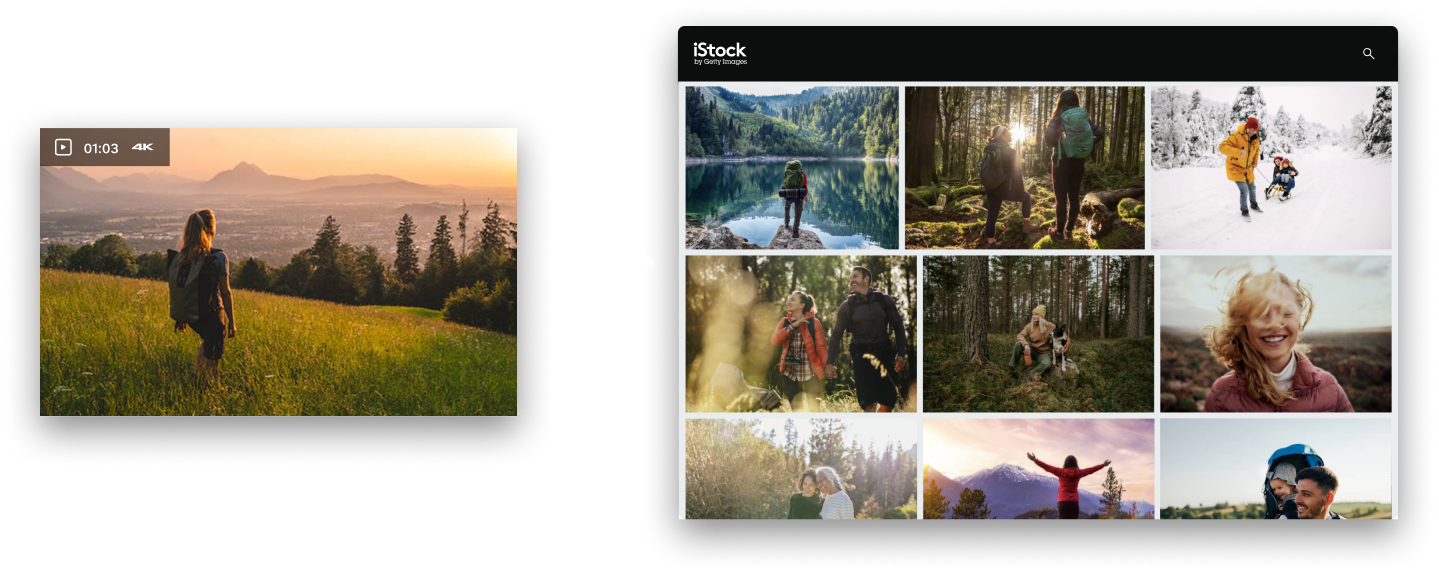
We hypothesized this was largely due to discoverability. Users simply weren’t seeing video in their search experiences. If users see video alongside images in search results by default, then we expect an increase in video engagement, conversion, and revenue.

Prior to design exploration, I conducted a competitor analysis to identify how stock platforms handle mixed grids, the visibility of video assets, and filter behavior. I discovered some key gaps and patterns (e.g., poor video representation in mixed results, inclusive filter panel logic) that helped shape our team’s awareness and understand our market positioning with this initiative.
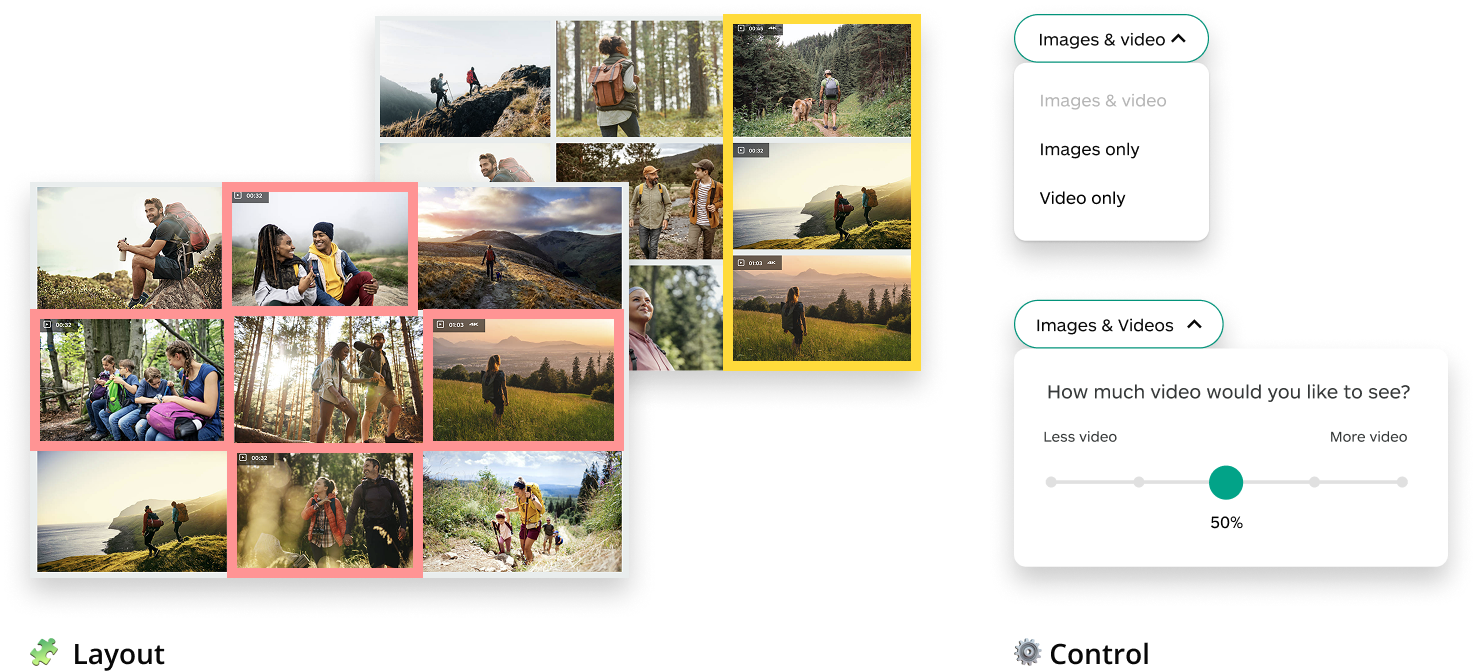
To better understand desirability and validate our assumptions, we started design explorations. Our primary learning goals via unmoderated testing included user preference on the grid layout (interleaved vs. side-by-side), and the depth of user control (dropdown vs. slider).
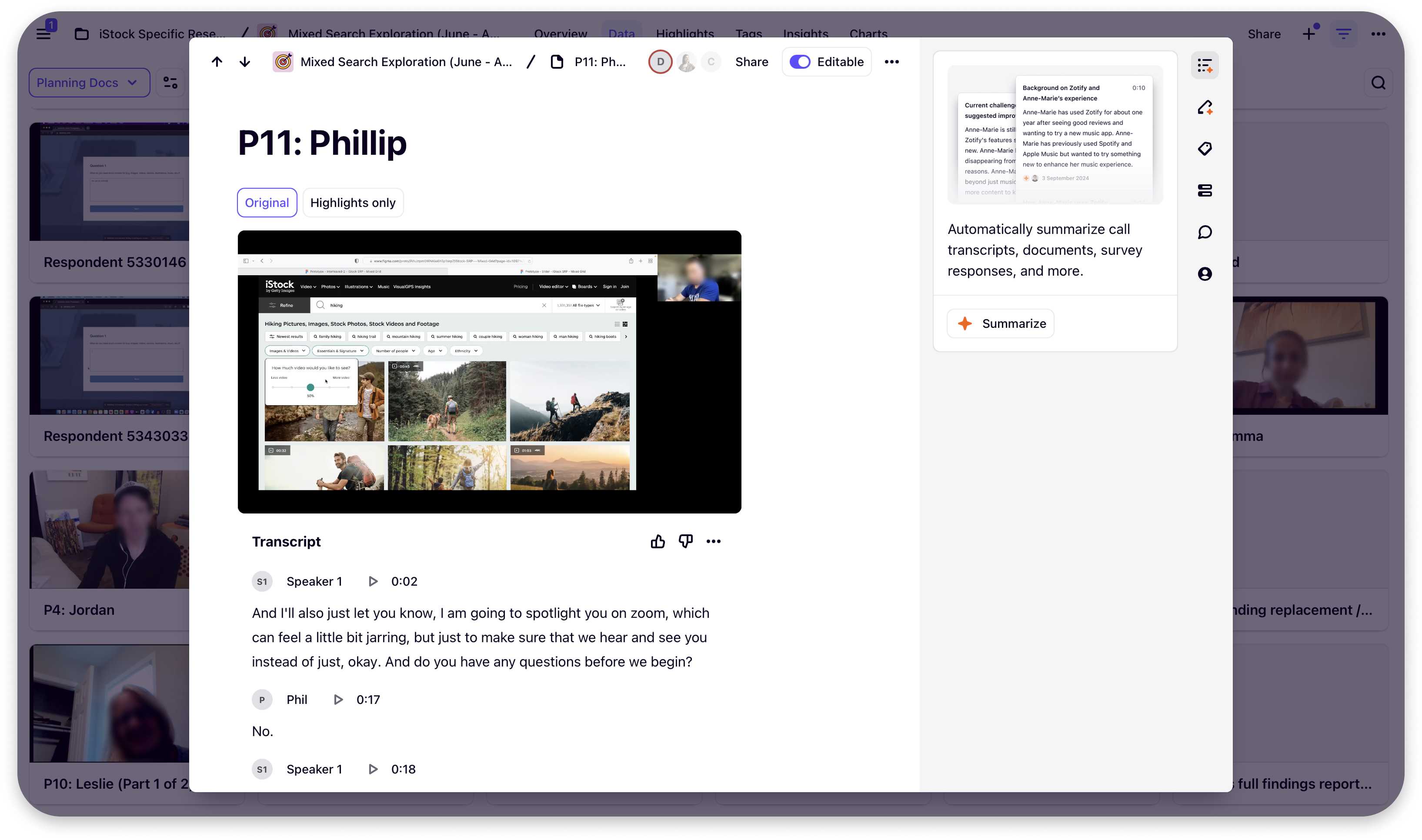
The testing confirmed defaulting users to a ‘mixed grid’ raised awareness of our video offering and increased video conversion. We also discovered only 0.6% of users interacted with the dropdown control, which also confirmed the desirability of the grid and that the control was unnecessary.
With clear positive signals, we moved toward a solution for Getty and decided to introduce a new mixed search scope for Creative content, one of Getty Images’ two content types alongside Editorial, rather than mixing video into image SRP. This required deeper thinking about the current navigations on Getty Images.
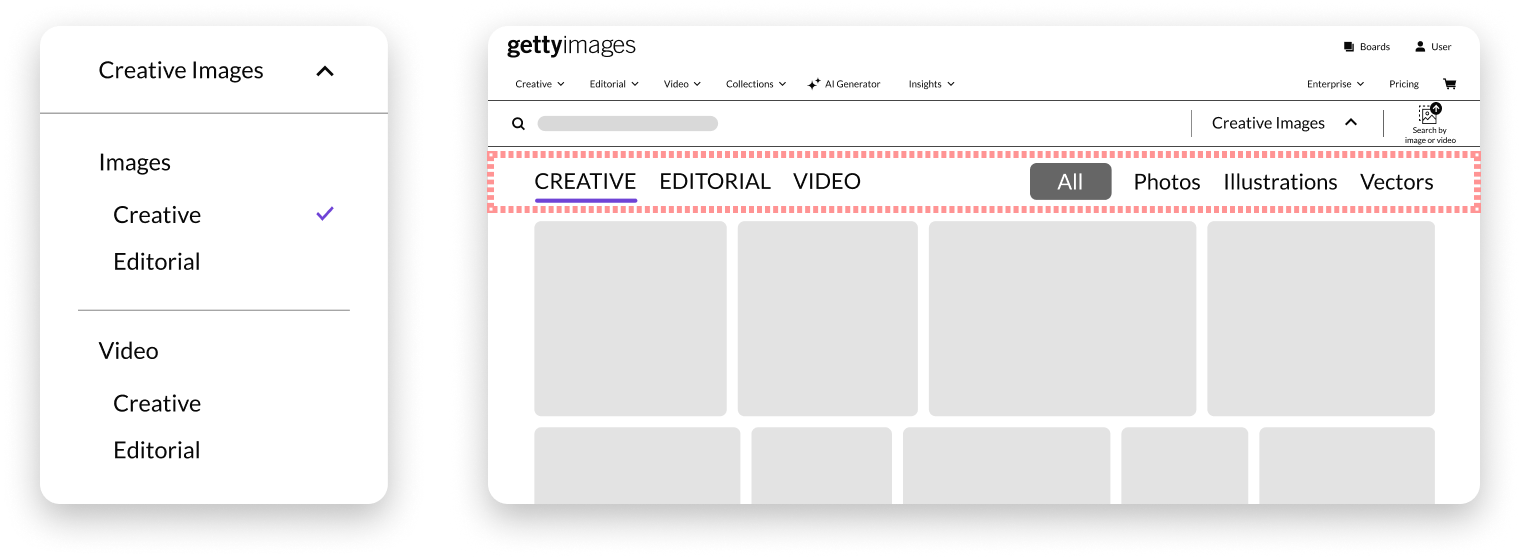
To move fast, I proposed a low-effort MVP solution for the testing purpose.
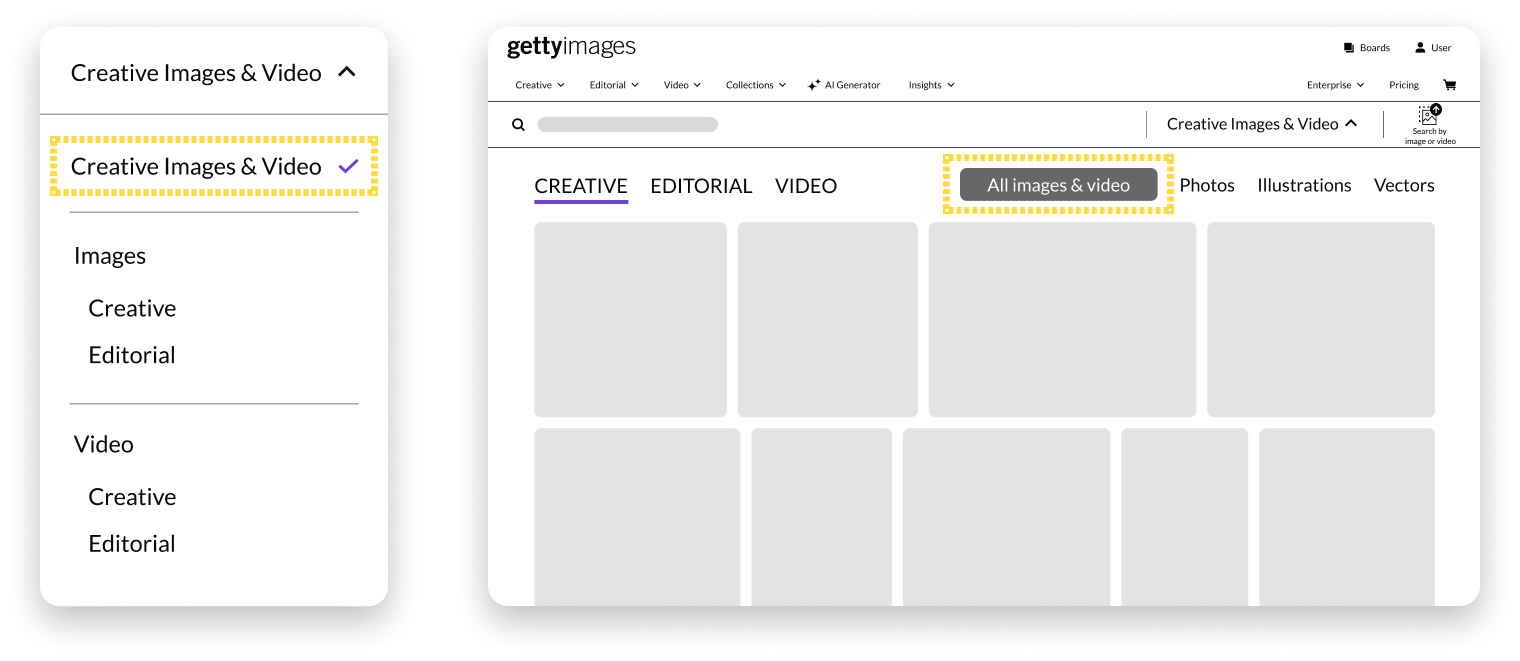
As part of the longer-term navigation refinement strategy, I partnered with the VP of SEO and PMs to evaluate whether we should remove the “All Images” option from the UI. While it had low user engagement, it played a critical role in SEO traffic. Based on stakeholder input, we chose to keep it visible to preserve crawlability and search discoverability.
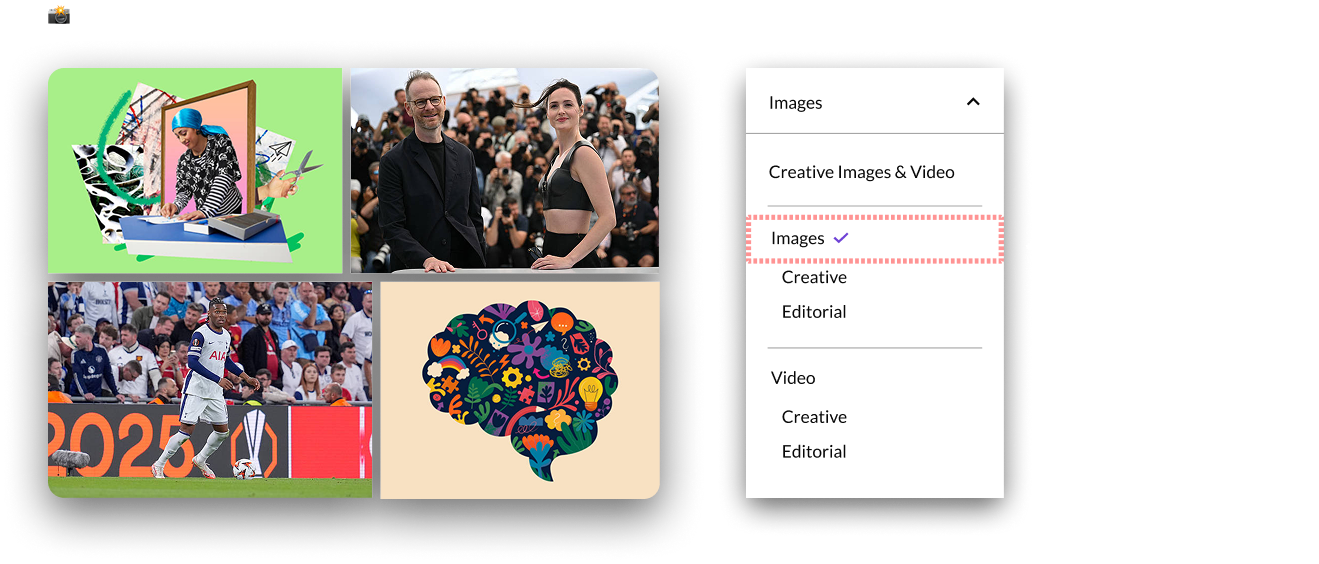
In contrast, the “All Video” scope had clear user value. Users often don’t distinguish between Editorial and Creative video because video often has overlapping use cases, so maintaining a unified “All Video” option remained essential for usability and conversion. This outcome demonstrated the importance of balancing UX clarity with SEO strategy and business impact.

Creative content-type sub-menu interactions were high, signaling strong user value. This was a clear indication that these filters belonged in the primary content structure and should be included in the search picker itself for better accessibility.

In contrast, Editorial’s topic-based sub-menu had extremely low interaction, despite its visual prominence. This indicated it lacked user value and did not need to occupy a prominent place in the interface.

'Video' on the sub-nav had been reactively added as a video acceleration purpose. However, I discovered that iStock’s newly introduced left-aligned search picker with iconography significantly boosted video search driven by the new picker's improved visibility and accessibility.

Synthesizing those findings, I reimagined Getty’s information architecture to support:

Based on the data analysis and new architecture, I proposed a longer-term solution aimed at streamlining Getty's navigation system while preserving access to key content types. This solution is designed to support future implementation of the Editorial experience once business priorities align.
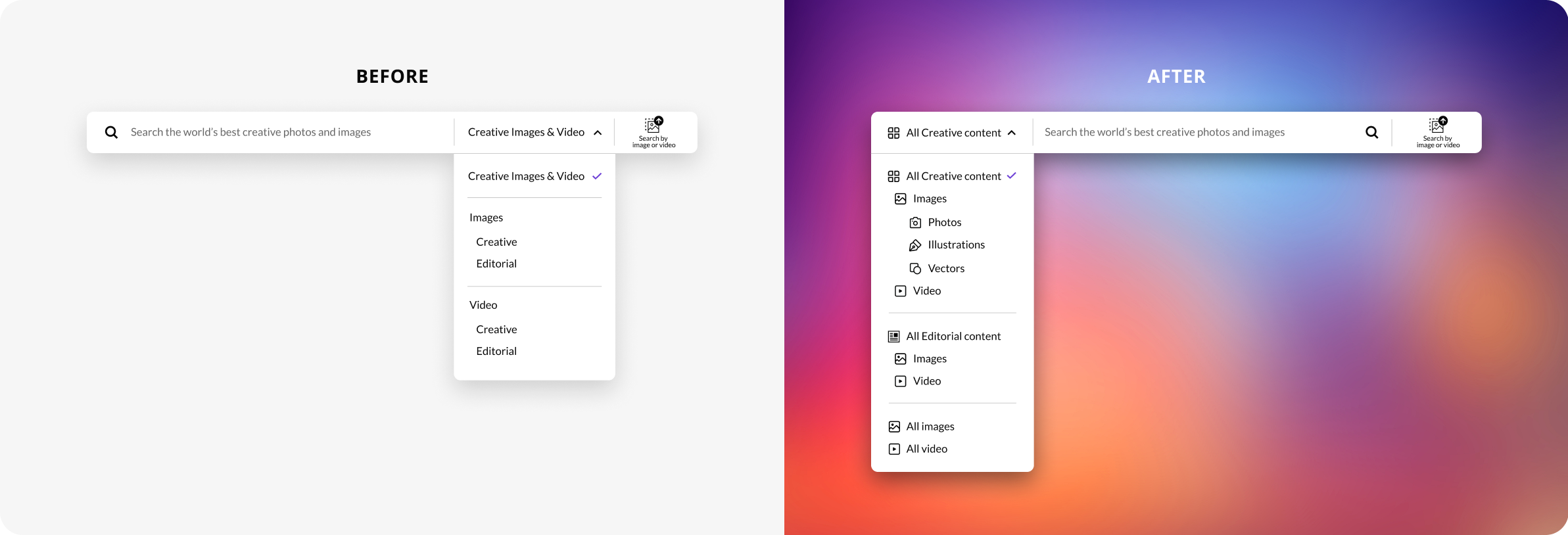
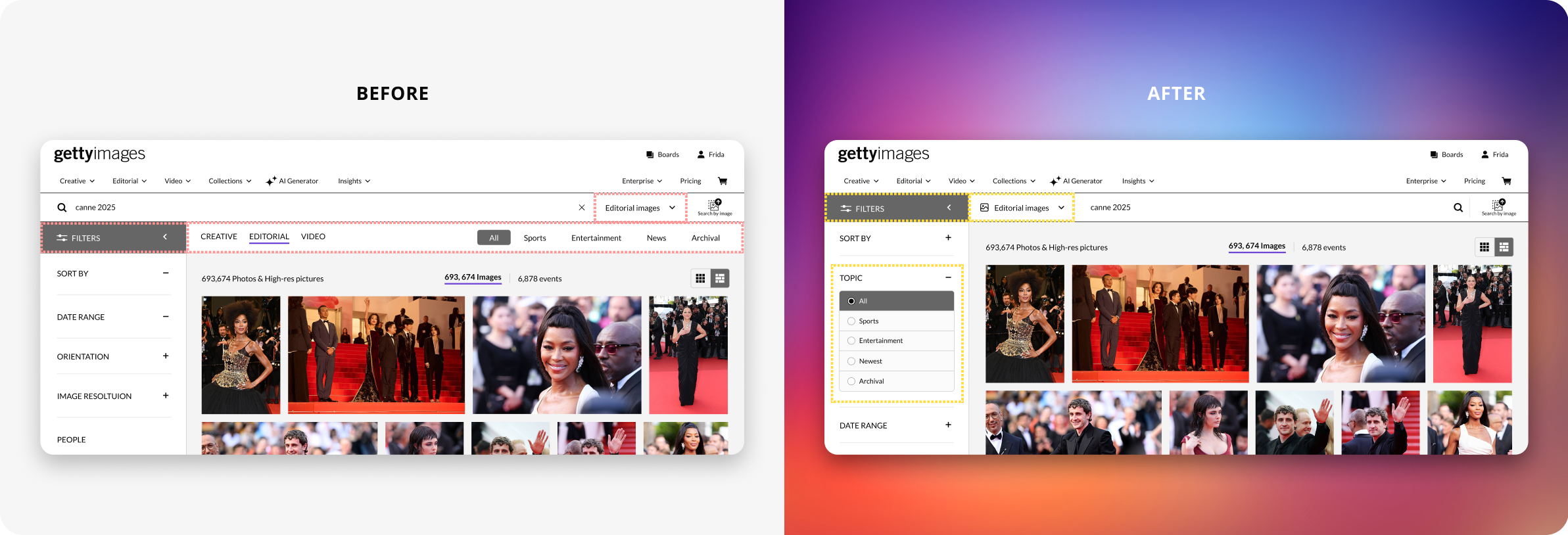
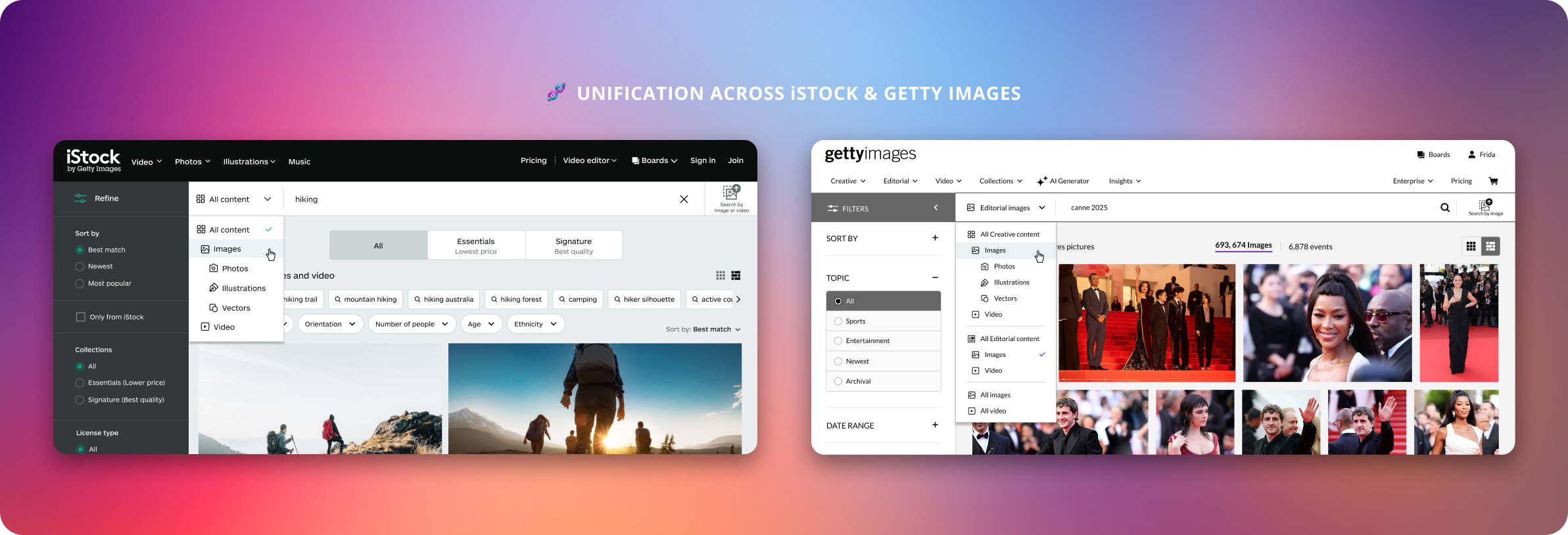
While the design strategy was well received by stakeholders, implementation for the Editorial experience is currently on hold. This is due to uncertainty around the future of Editorial testing, driven by a limited video offering in the Editorial catalog. The business is continuing internal discussions to align on strategy and define goals for future iterations.
This project sharpened my ability to make data-informed design decisions that solve immediate needs and scale over time. By analyzing existing data, I identified opportunities, validated assumptions, and guided system-level changes. Starting with a focused MVP let us move quickly, while designing for scalability aimed the product could grow with evolving needs.